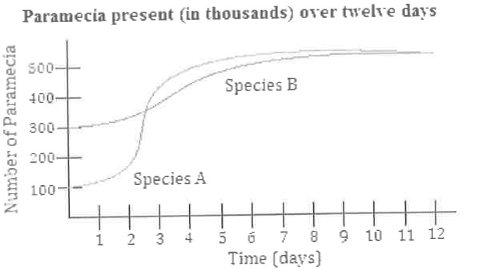How do scientists extrapolate the total number of species on earth ?
To understand how scientists extrapolate the total number of species on Earth, we can break down the process into several key steps:
1. Selection of an Exhaustively Studied Group:
Scientists begin by selecting a specific group of organisms that have been studied in detail. This is often a group like insects, which are abundant and diverse.
2. Calculation of Species in the Selected Group:
Once the group is selected, researchers calculate the number of species within this group in a specific region, typically focusing on tropical areas where biodiversity is highest.
3. Comparison with Subtropical Regions:
After determining the number of species in the tropical region, scientists compare this number with the species count in subtropical regions. This comparison helps in understanding the differences in biodiversity between these two areas.
4. Calculation of the Ratio:
Scientists then calculate the ratio of species in the tropics to those in the subtropics. This ratio serves as a crucial factor for extrapolation.
5. Extrapolation to Estimate Other Species:
Using the calculated ratio, scientists can estimate the number of species in other groups or regions. This method allows them to make educated guesses about the total biodiversity on Earth based on the data from the exhaustively studied group.
6. Final Estimation of Total Species:
Finally, by applying the extrapolated ratios to different groups of organisms, scientists arrive at an estimate of the total number of species present on Earth.
Scientists begin by selecting a specific group of organisms that have been studied in detail. This is often a group like insects, which are abundant and diverse.
Once the group is selected, researchers calculate the number of species within this group in a specific region, typically focusing on tropical areas where biodiversity is highest.
After determining the number of species in the tropical region, scientists compare this number with the species count in subtropical regions. This comparison helps in understanding the differences in biodiversity between these two areas.
Scientists then calculate the ratio of species in the tropics to those in the subtropics. This ratio serves as a crucial factor for extrapolation.
Using the calculated ratio, scientists can estimate the number of species in other groups or regions. This method allows them to make educated guesses about the total biodiversity on Earth based on the data from the exhaustively studied group.
Finally, by applying the extrapolated ratios to different groups of organisms, scientists arrive at an estimate of the total number of species present on Earth.
Topper's Solved these Questions
- BIODIVERSITY AND CONSERVATIONBOOK - NCERT EXEMPLAR ENGLISHCHAPTER - BIODIVERSITY AND CONSERVATIONEXERCISE - LONG ANSWER TYPE QUESTIONS
9 Videos
- BIODIVERSITY AND CONSERVATIONBOOK - NCERT EXEMPLAR ENGLISHCHAPTER - BIODIVERSITY AND CONSERVATIONEXERCISE - VERY SHORT ANSWER TYPE QUESTIONS
16 Videos
- BIOTECHNOLOGY AND ITS APPLICATIONS BOOK - NCERT EXEMPLAR ENGLISHCHAPTER - BIOTECHNOLOGY AND ITS APPLICATIONS EXERCISE - All Questions
57 Videos
Similar Questions
Knowledge Check
A more conservative and scientifically sound estimate about the total number of species present on earth, was made by
(a) Robert May
(b) Paul Ehrlich
(c) David Tilman
(d) Both A and BARobert MayBPaul EhrlichCDavid TilmanDBoth A and BWhich of the following statements regarding the estimates of number of species found on earth is not correct ?
(a) Total number of species present on earth are considered to be about 7 million as estimated by Robert May.
(b) Plants constitute more than 70% of all the species recorded, whereas animals constitute less than 22% of the total number of species.
(c) Insects constitute more than 70% of all the animal species.
(d) None of theseATotal number of species present on earth are considered to be about 7 million as estimated by Robert May.BPlants constitute more than 70% of all the species recorded, whereas animals constitute less than 22% of the total number of species.CInsects constitute more than 70% of all the animal species.DNone of these
A small puddle is monitored by scientists for the number of paramecia present. The scientists are in two distinct species, let's call them ''species A'' and ''species B''. At time t = 0, the scientists measure and estimate the amount of species A and species B present in the puddle. They then proceed to measure and record the number of each species of paramecium present every hour for 12 days. the data for each species were then fit by a smooth curve, as shown in the graph above. Which of the following is a correct statement about the data above?AAt time t = 0, the number species B present is 150% greater than the number of species A presentBAt time t = 0, the number of species A present is 75% less than the number of species B presentCFor the first 3 days, the average growth rate of species B is higher than the average growth rate of species A.DThe growth rate of both rate of both species A and species B decreases for the last 8 days.
Robert may estimated the total number of species of the world at
View SolutionLargest number of species are traced in
View SolutionLargest number of species occurs in the phylum
View SolutionAbout the total number of species present on earth, a more conservative and scientifically sound estimate made by
View SolutionIf there are 50 mangoes in a box, how will you write the total number of mangoes in terms of the number of boxes? (Use b for the number of boxes.)
View Solution
